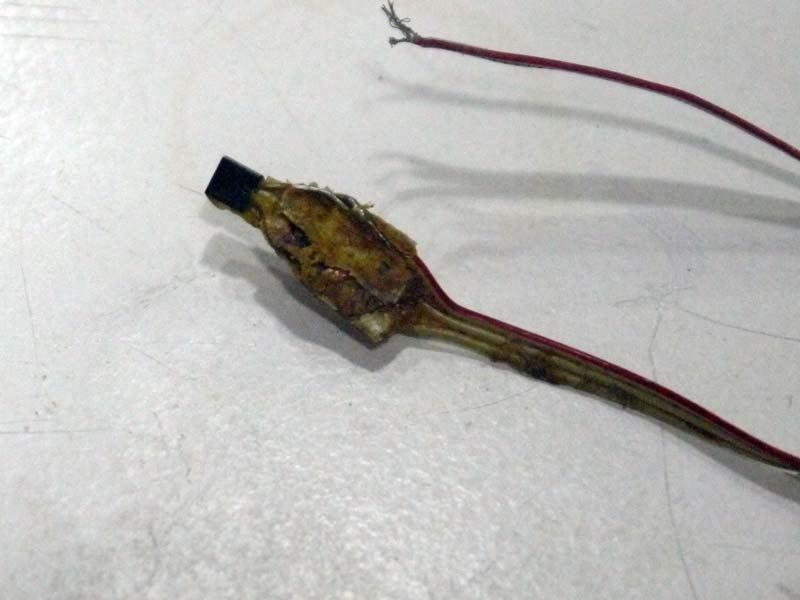Final Project - Beehives
The final project ended up being a collection of work. Most notably the Open Source Warré hive. There are now four residing in both Barcelona and Brussels.
Bee Counter
The concept behind the bee-counter is that it enables the user to keep a record of the number of bees entering and leaving the hive. It uses IR reflectance sensors to sense when a bee passes through one of the gates. By having two sensors in each gate it can assume the direction that the bee is travelling in. In theory, with some tweaking it might be possible to estimate if the bee is a drone (male) or a worker (female) based on the bee's size. There is also the possibility of marking the back queen with a blob of paint which would have a high reflective index so you would know if she had left the hive. However, if that happened you are probably too late to stop the swarm so it might be better to look at swarm prediction methods like listening for a certain frequency of sound that some have reported is produced a couple of days before bees swarm.

Collecting the data
Right now our hives are actively collecting temperature and humidity data on-site. Unfortunately this data is not live online at the moment (explained below) but when it is I will update the links here accordingly.

Above - one of the digital temperature sensors after 2 months inside the hive. The material you see covering it is propolis, a breathable binding substance that bees produce to close gaps and add strength to structures.
Using the Internet
Initially we set up a COSM account https://xively.com and broadcast some sensor readings there, but after taking the board to Valldaura for testing we realised that wifi would not be an option in this case so we had to look for an alternative approach.
Writing to SD
As an interim solution we decided to make use of the Micro-SD card slot on the Smart Citizen board and log all data (at 2 minute intervals) to external storage. In an ideal world we would have used the RTC (Real Time Clock) chip to give an accurate timestamp for each reading but unfortunately I managed to connect the watch battery the wrong way round which quickly burnt out the RTC. Our solution was to rely on a software based RTC - which works on the principle of using the internal clock to count up from the time that the firmware was compiled. It’s not ideal, but proved to work well for our purposes. As a very rudimentary safety feature we write each day’s data in a new file, just incase one of the files got corrupted. The main downside with using software time like this is that each time we power down the board to extract the SD card and download its data, we have to reupload the firmware.
Internet Zero over Laser
Our final approach was to transmit data using a dismantled 1mW laser pointer. Mercifully, despite the possibility of strong direct sunlight during the day, the area around our hives is pitch black at night. This means that we can store data during the day and transmit it back to a receiver/server inside the house at night. Ideally we would be able to send live readings but when we tested our laser in the field we found that we would need a stronger laser and/or filters covering the receiver.
Current Solution
The latest 'fab' version of the sensors uses the Barduino, streaming data over Serial to fulfill the requirements of the academy. However I very much want to further investigate using a fully integrated circuit with data transmission over laser. I have some stronger lasers waiting for me back in the UK and I am excited to try them out!
Materials Used
- As for the hives themselves, we used 2m x 1m x 20mm sheets of hardwood ply
- The 'brains' of the hive is a Barduino
- The temperature and humidity sensors are described in the input devices week
- The bee counter is described above
What lies ahead...
Going forward, together with Jon Minchin, I have been collaborating with OKNO and others in making new sensors for the hive that we aren't yet allowed to disclose. Although at this point my contribution to the project is reasonably limited. Once I have made a significant contribution and we are allowed to disclose it I will immediately publish it here as it's really cool!
What I have learnt
I have thoroughly enjoyed my time on the Fab Academy course and recommend it to anyone who thinks it might be the type of thing they'd enjoy. Especially here in sunny, beautiful Barcelona. When I was growing up I was always playing with Lego, or making my own things, and I don't know what happened but since going to high school that eagerness to play and make was hammered out of me. The fire has now been rekindled and I hope it is going to burn strong for years to come.
The machine design task was definitely the low point. It got extremely stressful towards the end but I think I have come away from it a wiser person. If I ever take on a group project like that again I will be religious with milestones and ensuring that everyone is working towards the same goals.
As much as I have loved doing the academy and meeting all the great people I have along the way I am now feeling quite exhausted and am looking forward to a few days away from the lab! Saying that I know I will be itching to get back to it, especially after meeting the inspiring people going to FAB9!
ではまたすぐにね。 :)
Download all final archive project files (zip) Latest live version (zip)

